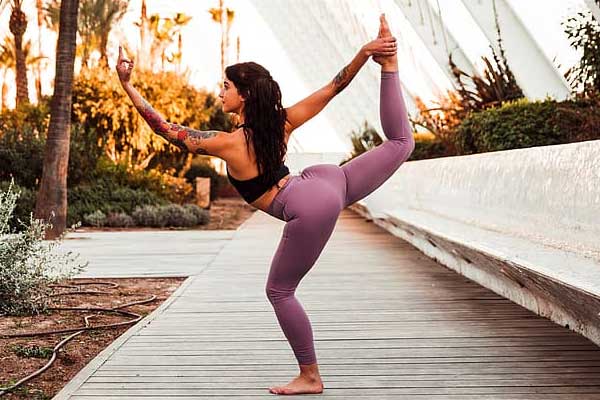As someone who has been practicing yoga for several years, I have come to appreciate the unique benefits that different types of yoga can offer. While I have tried many forms of yoga, Yin Yang Yoga has become one of my favorites.
In this beginner’s guide to Yin Yang Yoga, I will explain what it is, its benefits, poses and techniques, how it differs from other forms of yoga, how to prepare for practice, tips for beginners, and common misconceptions about Yin Yang Yoga.
Introduction to Yin Yang Yoga
Yin Yang Yoga is a relatively new style of yoga that combines the elements of Yin and Yang.
Yin yoga is a slow-paced style that focuses on holding poses for an extended period, typically between three to five minutes.
Yin yoga aims to target the connective tissues, such as the ligaments, bones, and joints, to improve flexibility and mobility.
On the other hand, Yang yoga is a more vigorous style of yoga that focuses on building strength and stamina.
Yin Yang Yoga combines the benefits of both styles of yoga to create a practice that is both calming and energizing.
Practicing Yin Yang Yoga can improve your overall physical, mental, and emotional well-being.
What is Yin Yang Yoga? Understanding the Concept of Yin and Yang
According to Chinese philosophy, Yin and Yang are two complementary forces in everything in the universe.
Yin represents the passive and receptive aspects, while Yang represents the active and assertive aspects.
In terms of yoga, Yin poses are considered to be passive, while Yang poses are considered to be active.
Yin poses are typically held longer than Yang poses, and they target the deeper connective tissues of the body.
Yin poses are often seated or supine and meant to be held in stillness for several minutes.
Yang poses, on the other hand, are more dynamic and are designed to build heat and strength in the body.
Benefits of Practicing Yin Yang Yoga
There are many benefits to practicing Yin Yang Yoga, including improved flexibility, increased mobility, reduced stress and anxiety, improved circulation, and better balance.
Yin Yoga is particularly beneficial for people who spend a lot of time sitting or standing, as it helps to release tension in the hips, lower back, and hamstrings.
Yang Yoga, on the other hand, is great for building strength and endurance. It can also help to improve cardiovascular health and increase stamina.
By combining the benefits of Yin and Yang Yoga, you can create a practice that is both calming and energizing.
Yin Yang Yoga Poses and Techniques
There are many Yin, and Yang poses that you can incorporate into your practice.
Some famous Yin poses include the Butterfly, Pigeon, and Sphinx.
Yang poses, on the other hand, include Sun Salutations, Warrior poses, and Plank poses.
Yin Yang Yoga aims to balance the Yin and Yang poses to create a harmonious practice.
You can start with a few Yin poses to warm the body before moving into more dynamic Yang poses.
After the Yang poses, you can return to Yin poses to cool down and relax the body.
Another technique that is often used in Yin Yang Yoga is breathwork. By focusing on your breath, you can help to reduce stress and anxiety and calm your mind.
You can also use your breath to help you move deeper into the poses.
How Yin Yang Yoga Differs from Other Forms of Yoga
Yin Yang Yoga differs from other forms of yoga in several ways.
Unlike Vinyasa or Power yoga, Yin Yang Yoga is a slower-paced practice that focuses on holding poses for an extended period.
Unlike Restorative Yoga, Yin Yang Yoga includes both passive and active poses.
Yin Yang Yoga aims to balance the Yin and Yang aspects to create a harmonious practice.
This balance helps to improve overall physical, mental, and emotional well-being.
Preparing for a Yin Yang Yoga Practice
Before you start your Yin Yang Yoga practice, preparing your body and mind is essential. Make sure you wear comfortable clothing that allows you to move freely.
Use props, such as blocks or blankets, to help support you in the poses.
Creating a comfortable and peaceful environment for your practice is also essential. Find a quiet space to focus on your breath and movement without distractions.
Tips for Beginners to Yin Yang Yoga
If you are new to Yin Yang Yoga, there are a few things you can do to make your practice more comfortable and enjoyable.
First, start slowly and listen to your body. Don’t push yourself too hard, and take breaks as needed.
Drink plenty of water before, during, and after your exercise to help keep your body hydrated.
Finally, be patient with yourself. Yin Yang Yoga takes time to master, and it is essential to acknowledge and celebrate your progress along the way.
Common Misconceptions about Yin Yang Yoga
There are many misconceptions about Yin Yang Yoga, including that it is only for advanced practitioners or needs to be faster-paced.
However, Yin Yang Yoga is accessible to anyone, regardless of their experience level.
Another misconception is that Yin Yoga is just stretching. While Yin Yoga does focus on stretching, it is much more than that. Yin Yoga is a holistic practice that includes breathwork, mindfulness, and relaxation.
Conclusion
In conclusion, Yin Yang Yoga is a unique and beneficial form of yoga that combines the elements of Yin and Yang.
Yin Yang Yoga can improve your overall physical, mental, and emotional well-being.
To get started with Yin Yang Yoga, try incorporating a few Yin poses into your practice to warm up the body. Then, move into more dynamic Yang poses to build strength and stamina.
After the Yang poses, return to Yin poses to cool down and relax the body.
Remember to be patient with yourself and listen to your body. With time and practice, you will begin to experience the many benefits of Yin Yang Yoga.
